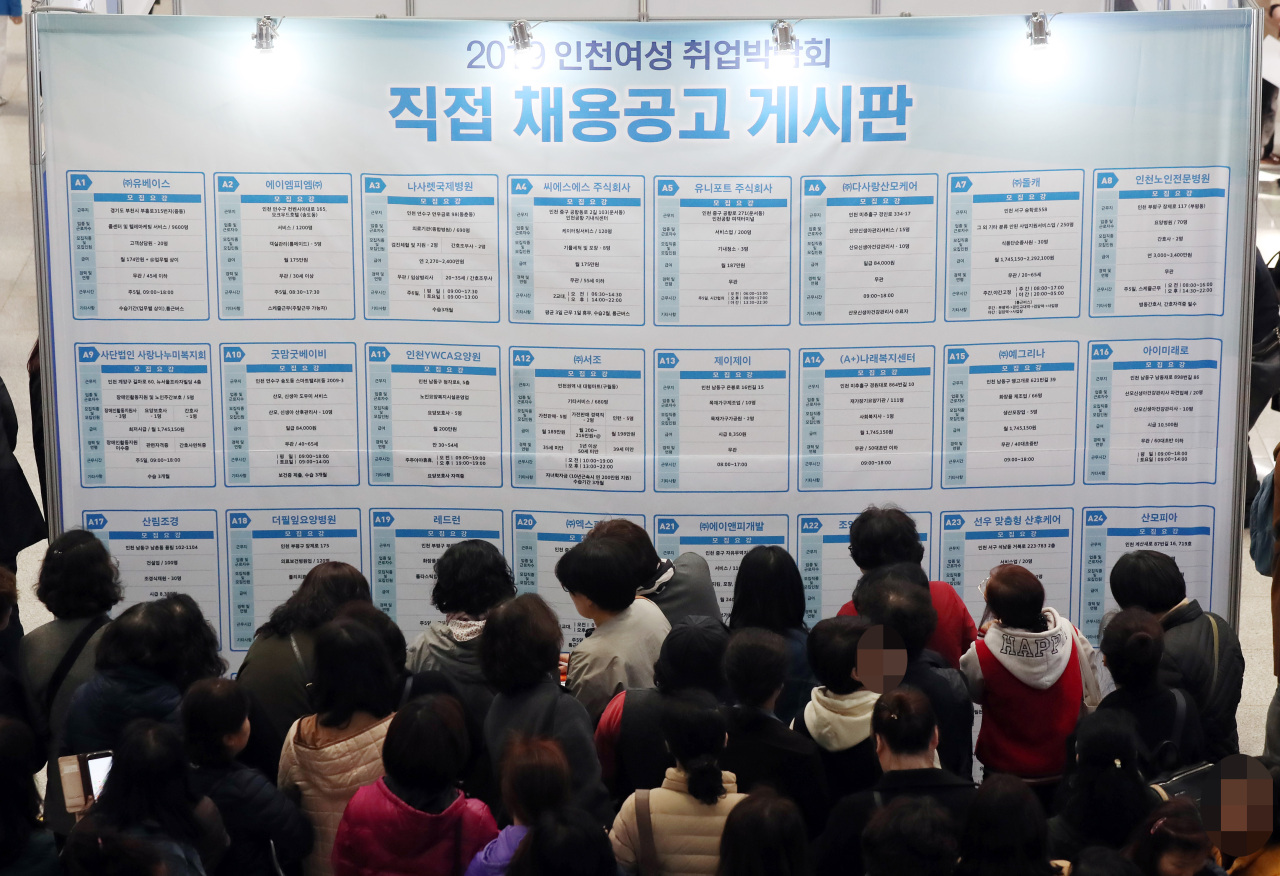May 15, 2019
Weak job markets and uncertain macroeconomics have contributed to increased unemployment.
South Korea’s jobless rate rose to 4.4 percent in April, government data showed Wednesday, in the latest sign of a weak job market amid an economic slowdown in Asia’s fourth-largest economy.
The unemployment rate increased 0.3 percentage point from a year earlier, according to the data compiled by Statistics Korea.
It also marked the highest level for any April since 2000, when the corresponding figure stood at 4.5 percent.
 |
The number of employed people reached 27.03 million in April, an increase of 171,000 from the same month in 2018.
The unemployment rate for young adults — those aged between 15 and 29 — rose to 11.5 percent last month from 10.7 percent tallied a year earlier.
By industry, the manufacturing sector — the backbone of South Korea’s economy — continued to suffer a decline in job offerings by losing 52,000 jobs in April, and the retail and wholesale sector also saw a reduction of 76,000 positions.
In contrast, the health and social welfare sectors added 127,000 jobs, and the education service sector saw an increase of 55,000 jobs last month.


